Types of alliums: 15 beautiful bulbs for your garden
We've rounded up our top types of alliums for adding statement structure to borders and pots
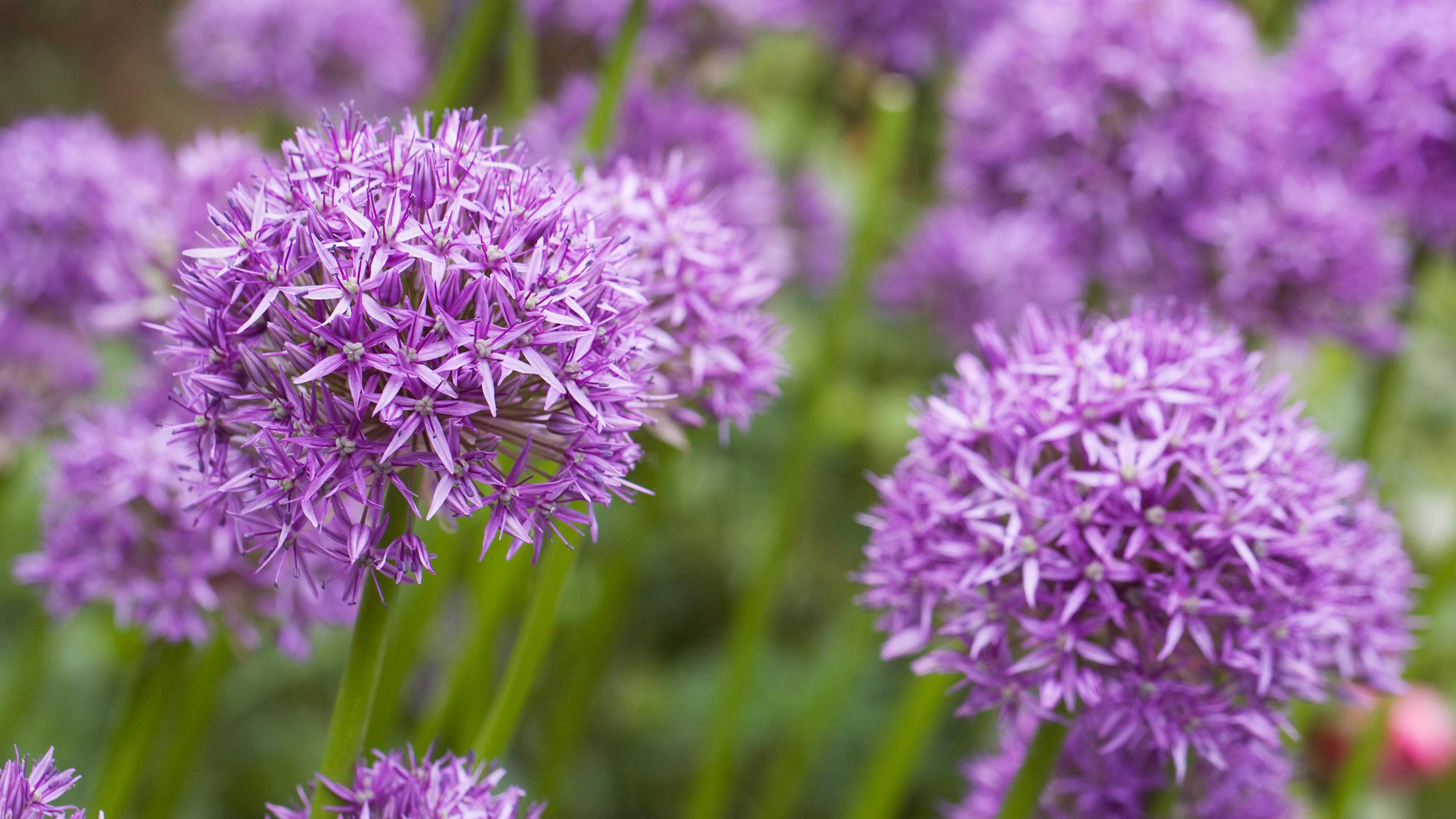

The best types of alliums get the summer show off to a bold start when their flower globes open in late spring. Like giant lollipops, the spherical structure of these bulbous perennials adds solidity and drama to borders during what is often a flowering lull.
Drought-tolerant and full of nectar for wildlife, alliums are also perfect plants for the modern garden and are easy to grow. ‘Alliums are incredibly perennial and flower for ages,’ says bulb supplier Sarah Raven. ‘I love them for adding late spring and early summer pizzazz, as well as bringing strong color and shape to the border. Plus, they are excellent for cutting as both flowers and seedheads, and brilliant for the bees.’
As well as the globular varieties, there are drumstick alliums (including the colorful ‘Red Mohican’) and those that produce feminine clusters of pendulous bells (such as lilac-pink A. cernuum). But it is the more well-known spherical types of alliums that give the best structure in the border and which morph into stunning seedheads in late summer. These can be left to add shape and texture, or they can be cut and dried to decorate the house. For example, just one seedhead of A. cristophii in an empty vase makes a beautiful feature.
15 types of alliums for pretty planting schemes
Plant allium bulbs in the fall and you can look forward to months of gorgeous architectural impact next year.
1. 'Summer Drummer'
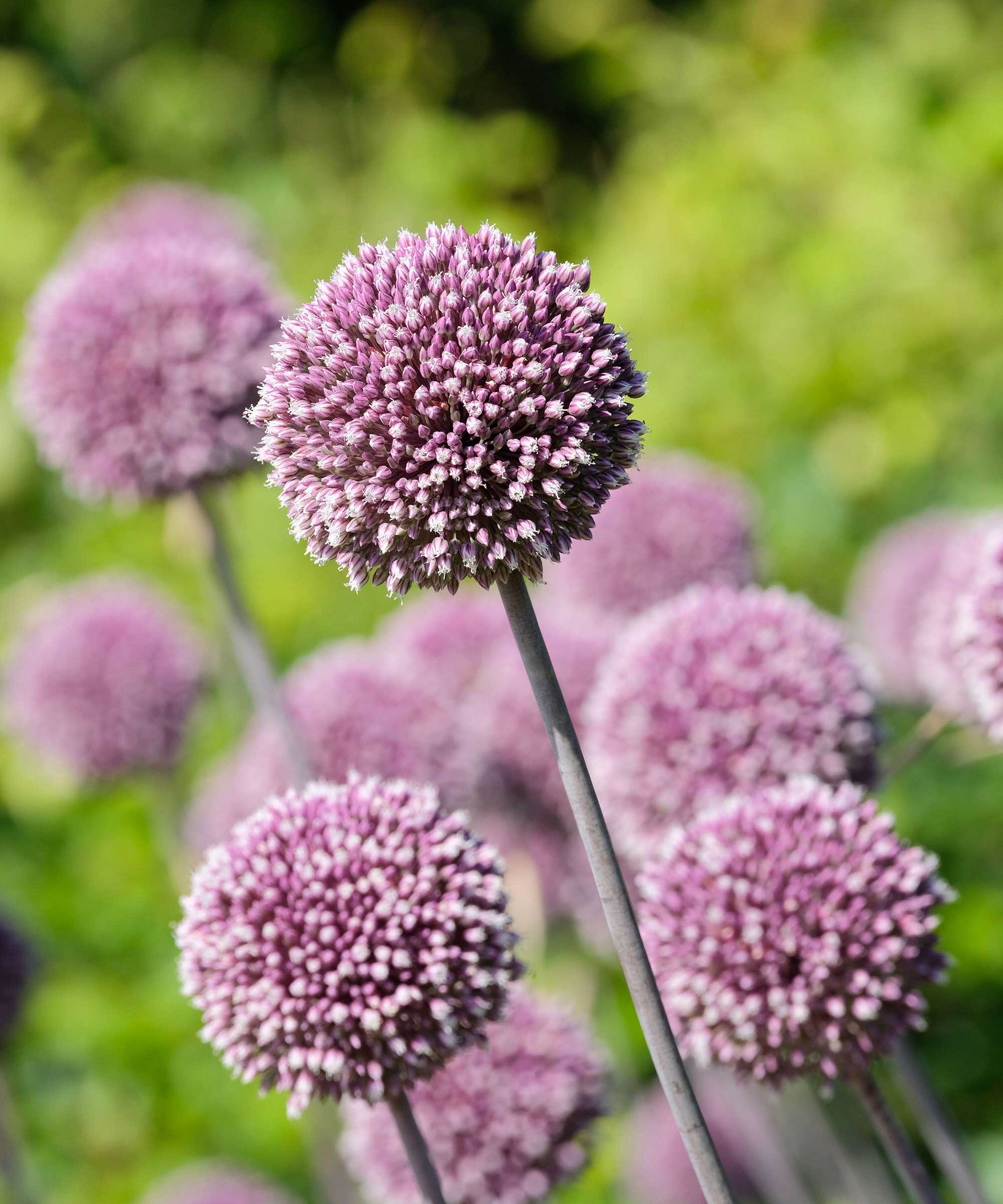
- Best for: Height
- Height: 7ft (2.1m)
- Spread: 8in (20cm)
- Hardiness: USDA 4-8 (UK H5)
This is a fabulously tall variety that blooms later than a lot of other alliums, flowering through mid to late summer.
Spherical soft-purple flowerheads emerge from sculptural buds and mature into attractive seedheads. They're great at the back of the border with fennel and delphiniums, or dotted through the middle of the border as vertical accents.
They will perform best in well-drained soil in full sun.
- Buy allium 'Summer Drummer' in the US: view at Dutch Grown
- Buy allium 'Summer Drummer' in the UK: view at Dutch Grown
2. A. sphaerocephalon
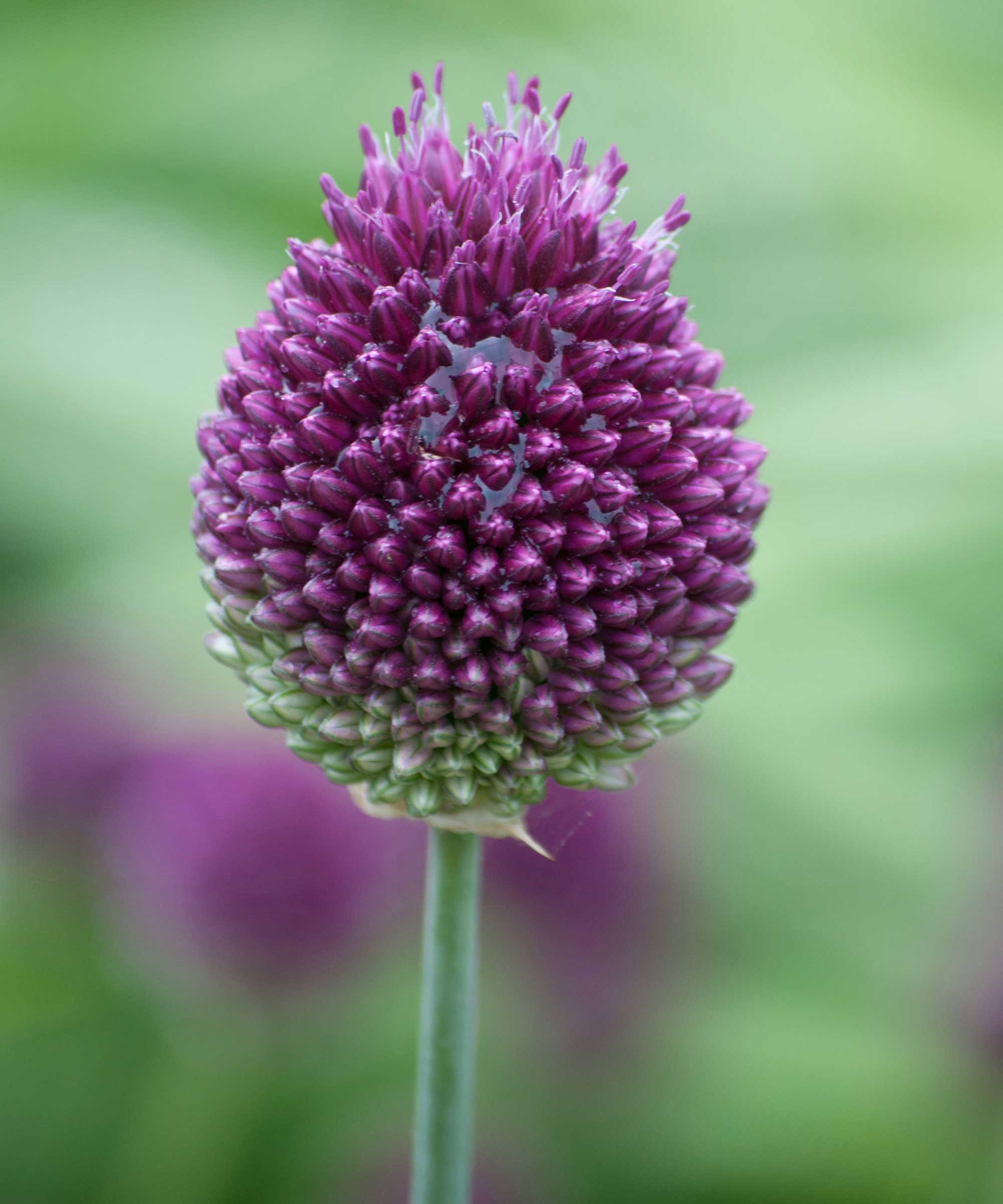
- Best for: Late-summer flowers
- Height: 18in (45cm)
- Spread: 4in (10cm)
- Hardiness: USDA 4-8 (UK H6)
This drumstick type of allium is perfect for late-summer interest with its small, egg-shaped flowerheads.
‘Drumstick alliums come from dry hillsides of central Asia where the only moisture is snow melt in the spring,’ says bulb supplier Christine Skelmersdale at Broadleigh Gardens. ‘This means their leaves grow first followed by the flowers.
'They need perfect drainage in the summer or the bulbs may rot,' she says, adding that they are excellent among ornamental grasses which like similar conditions.
- Buy Allium sphaerocephalon in the US: view at Dutch Grown
- Buy Allium sphaerocephalon in the UK: view at Crocus
3. A. stipitatum ‘Mount Everest’
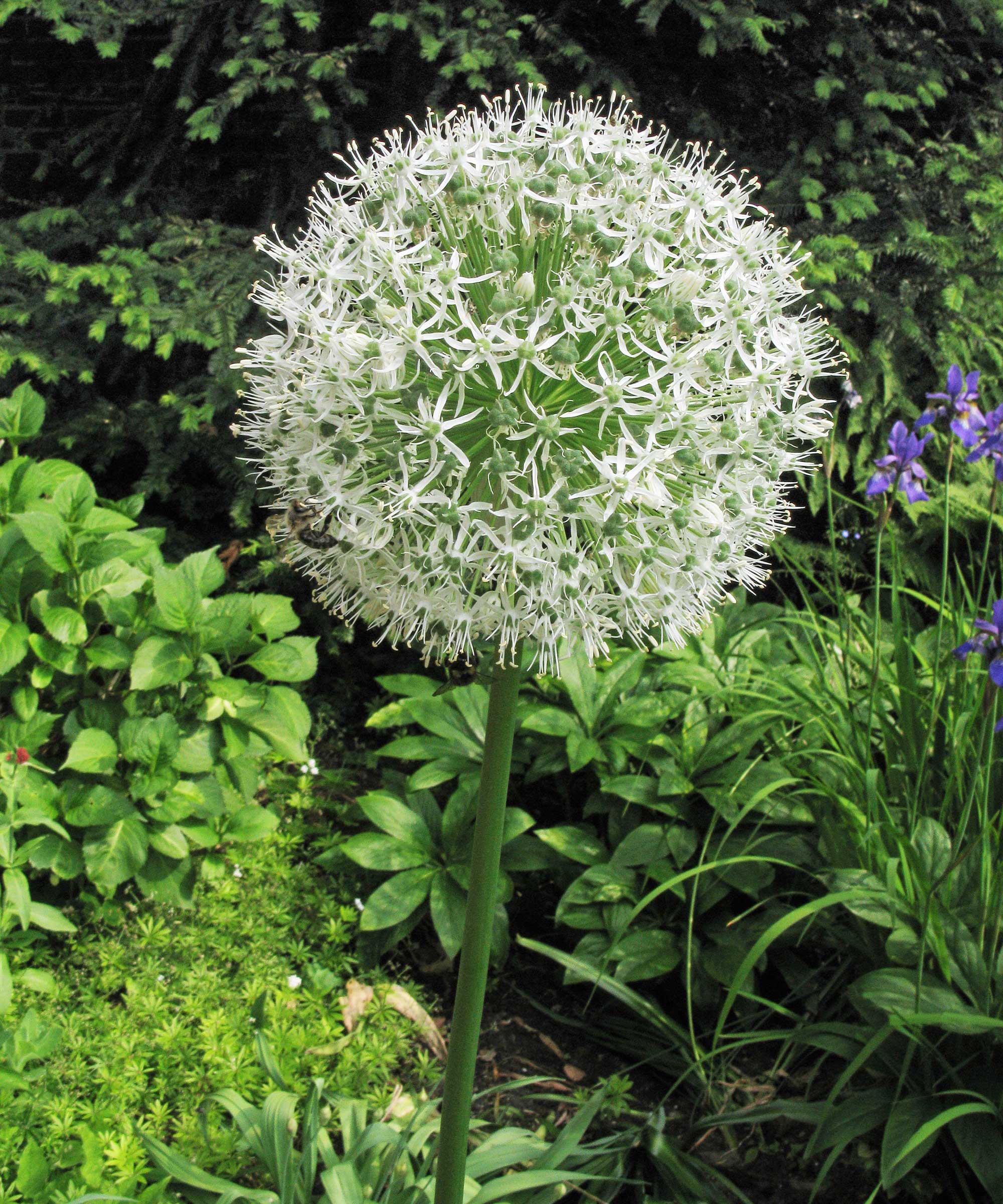
- Best for: Elegant flowers
- Height: 3ft (90cm)
- Spread: 4in (10cm)
- Hardiness: USDA 4-8 (UK H5)
This elegant allium produces globes of starry white flowers that can reach 5in (12cm) wide, atop sturdy, tall stems, in late spring and early summer.
Plant the bulbs 6in (15cm) deep in fall in well-drained, sun-baked soil. They are particularly excellent hovering above the black and purple spires of Salvia nemorosa ‘Caradonna’, which also provides bees with nectar.
- Buy Allium stipitatum ‘Mount Everest’ in the US: view at Dutch Grown
- Buy Allium stipitatum ‘Mount Everest’ in the UK: view at Crocus
4. A. amplectens ‘Graceful Beauty’
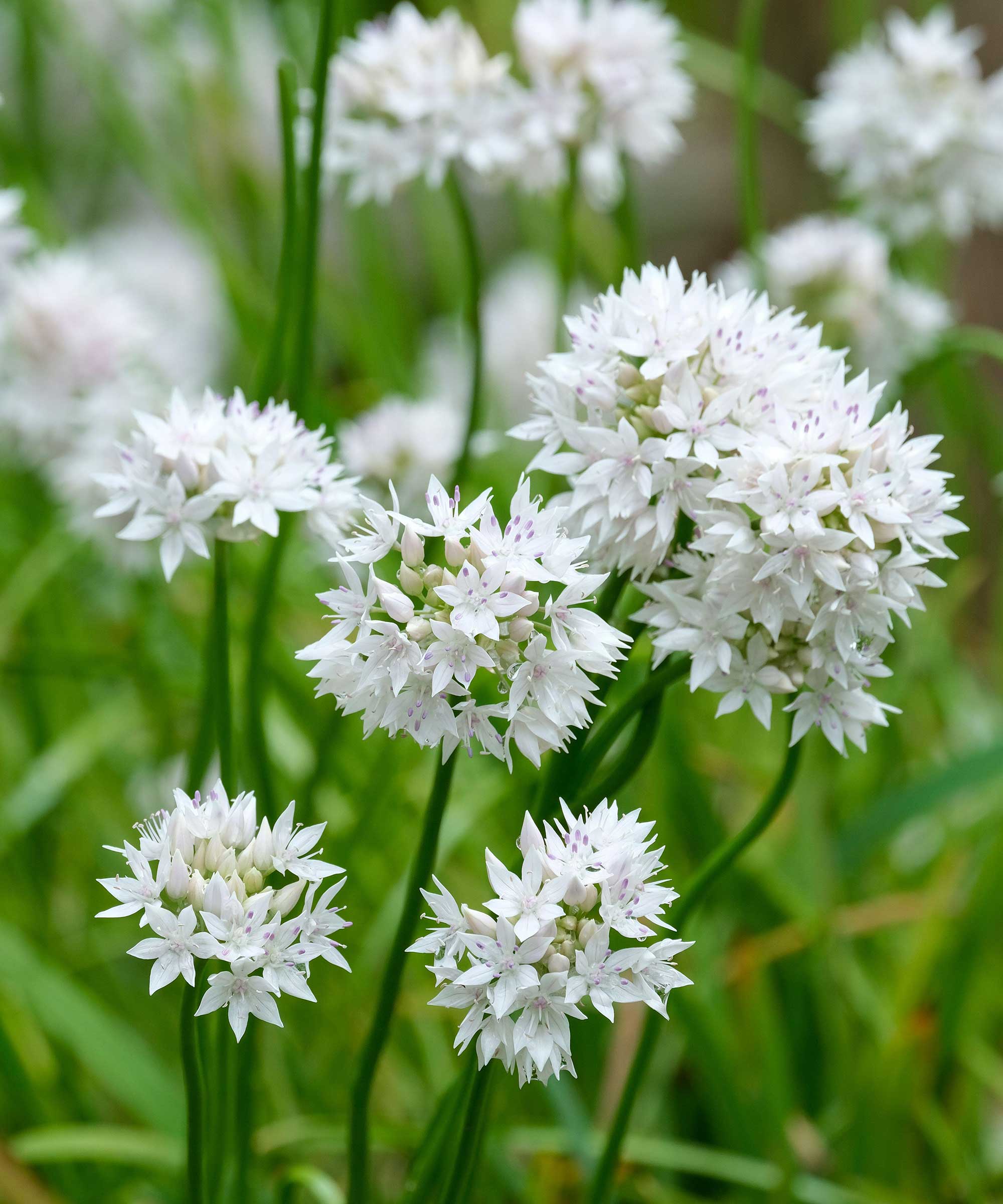
- Best for: Containers
- Height: 12in (30cm)
- Spread: 4in (10cm)
- Hardiness: USDA 4-8 (UK H5)
‘Graceful Beauty’ is a lovely low-growing allium for the front of the border or for growing in a container garden.
In late spring and early summer, it carries clusters of white star flowers bearing purple anthers. Plant the bulbs 4in (10cm) deep in fall, in well-drained soil in full sun. It pairs well with Euphorbia myrsinites.
The deciduous foliage can be removed once it looks scruffy.
- Buy Allium amplectens ‘Graceful Beauty’ in the US: view at Dutch Grown
- Buy Allium amplectens ‘Graceful Beauty’ in the UK: view at Thompson & Morgan
5. A. tuberosum
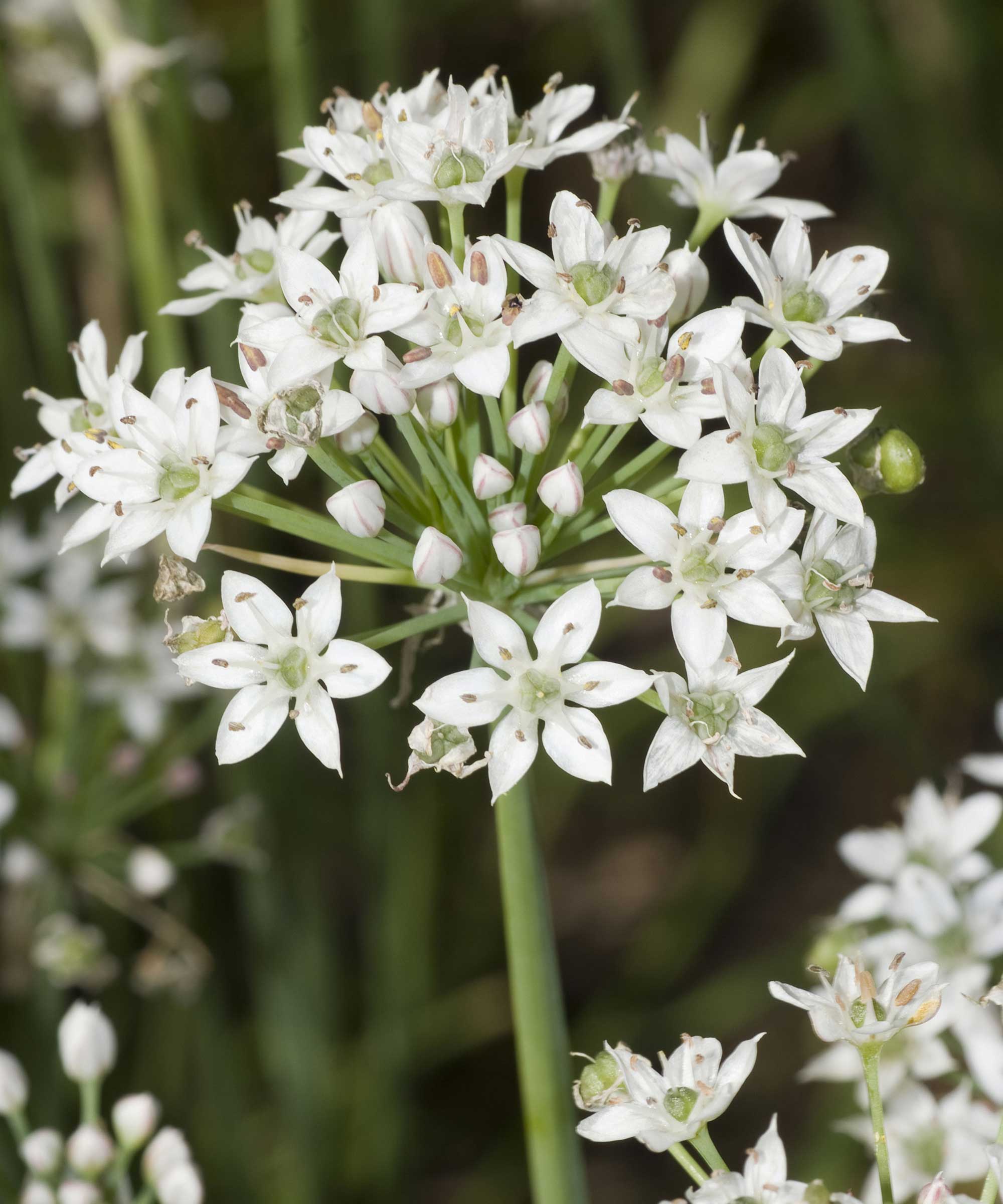
- Best for: Eating
- Height: 20in (50cm)
- Spread: 12in (30cm)
- Hardiness: USDA 4-8 (UK H5)
Chinese chives (also known as garlic chives) produce open starry umbels of white flowers very late in the allium season. Blooming from mid-summer into early fall, it is often the last allium to flower.
These types of alliums can also be used as an edible culinary herb, in the same way as normal chives. Grow at the front of the border or in the vegetable patch, in well-drained soil in sun.
6. A. carinatum subsp. pulchellum

- Best for: Cottage-garden charm
- Height: 2ft (60cm)
- Spread: 4in (10cm)
- Hardiness: USDA 6-9 (UK H5)
In summer, the keeled garlic produces soft clusters of pip-shaped pink-mauve flowers atop slender green-purple stems. At the Beth Chatto gardens in Essex, UK, it is combined beautifully with silver-leaved plants.
This bulbous perennial enjoys well-drained, light soil in full sun and will seed itself around the garden in the right conditions.
7. A. lusitanicum
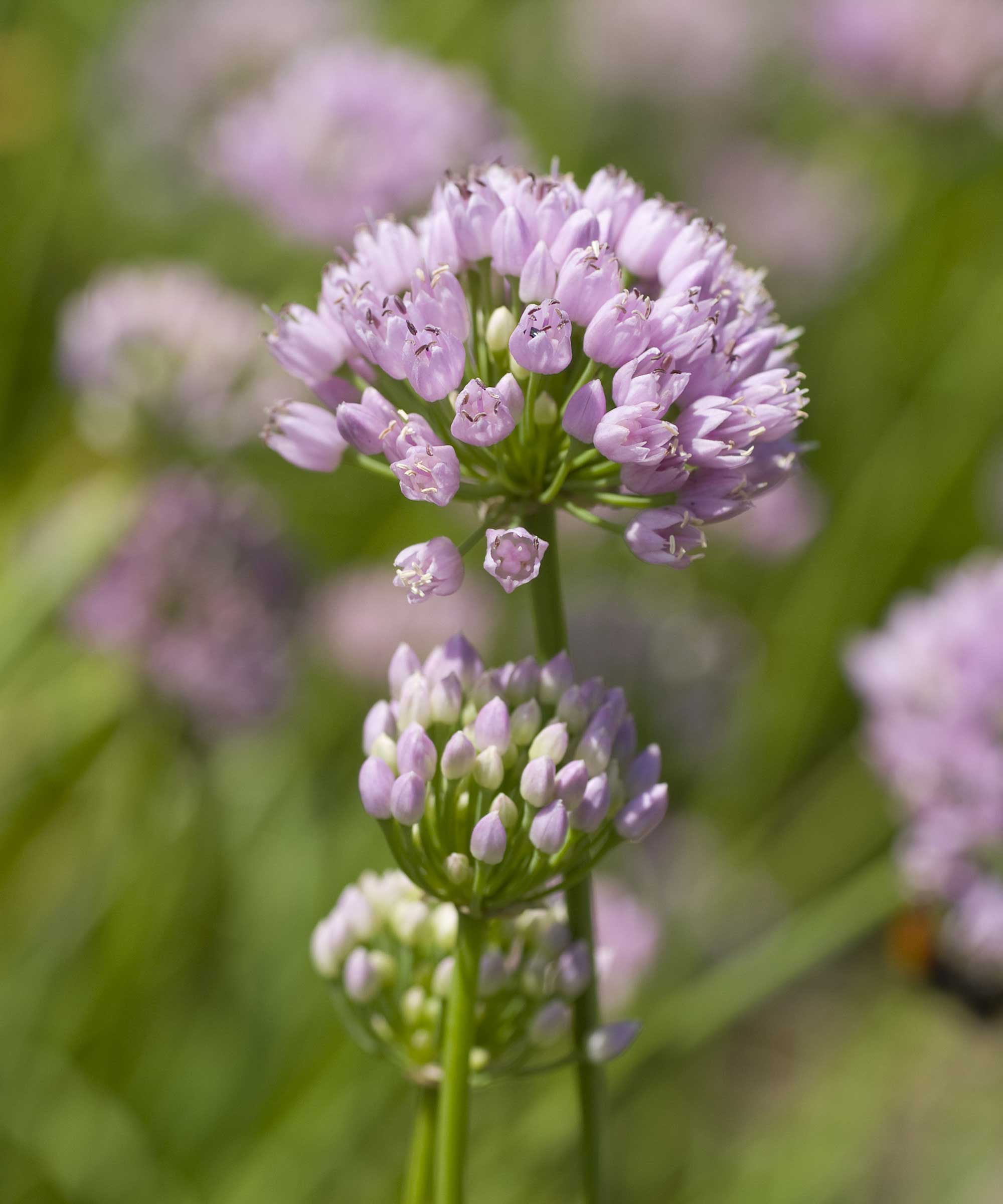
- Best for: Front of the border
- Height: 18in (45cm)
- Spread: 4in (10cm)
- Hardiness: USDA 5-9 (UK H6)
This variety is also known as A. senescens subsp. montanum; ‘Summer Beauty’, or the Portuguese allium. It produces lovely small globes of lilac-pink flowers atop slender stems in mid to late summer.
It is a good bee-friendly plant and combines well with low-growing plants, such as lamb’s ear and California poppies, at the front of gravel borders.
Grow it in well-drained soil in sun or semi-shade.
8. A. karataviense
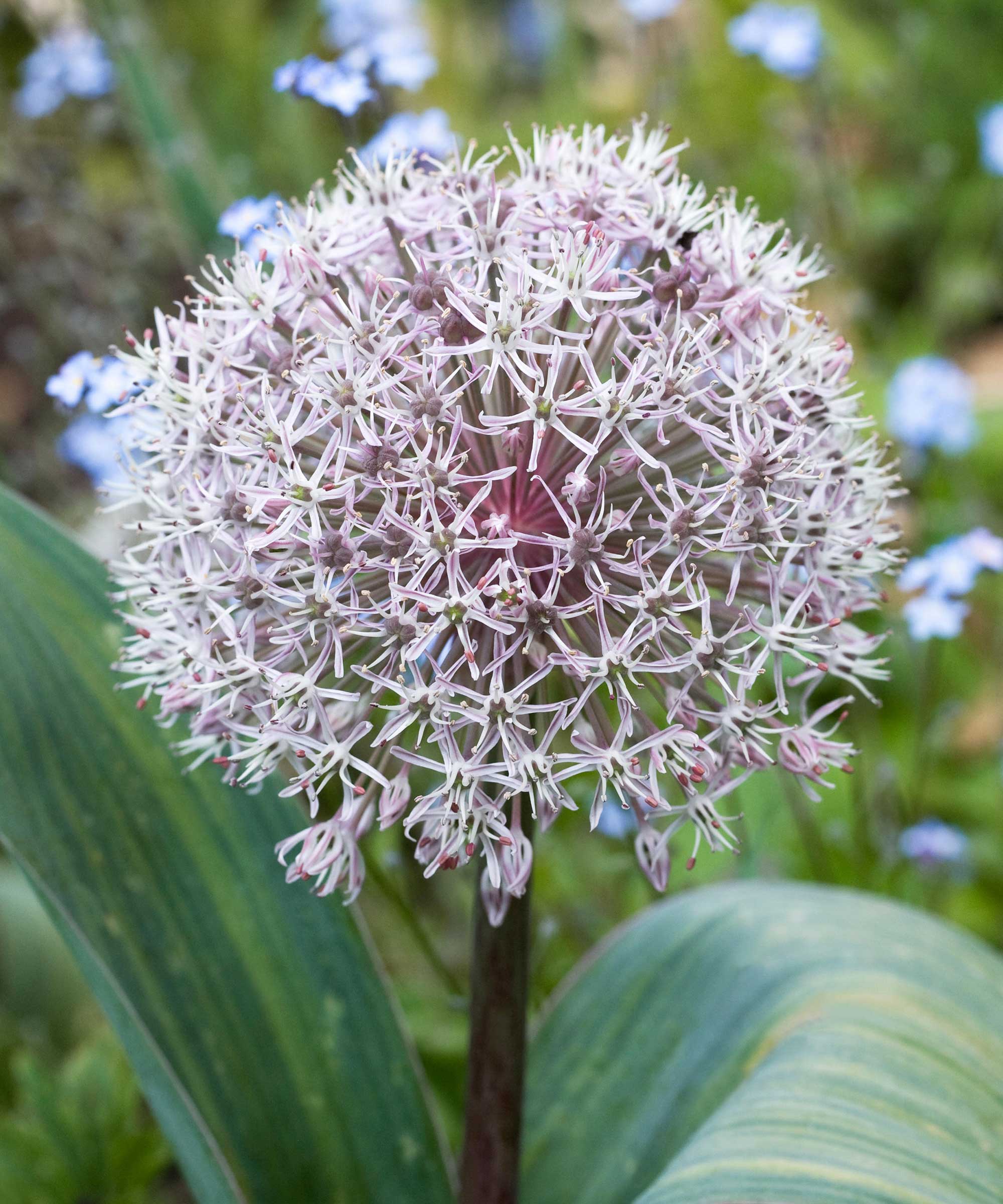
- Best for: Contemporary gardens
- Height: 10in (25cm)
- Spread: 8in (20cm)
- Hardiness: USDA 4-8 (UK H5)
The Karatau garlic has stylish and unusual spheres of gray-pink flowers in early summer. These large globular heads appear amid two wide arching purple-glaucous leaves and morph into attractive seedheads. We think they're perfect for modern gardens.
Native to the Karatau (the Black Mountains) region of Kazakhstan, they enjoy well-drained sunny borders or sun-drenched, well-drained containers.
9. A. flavum
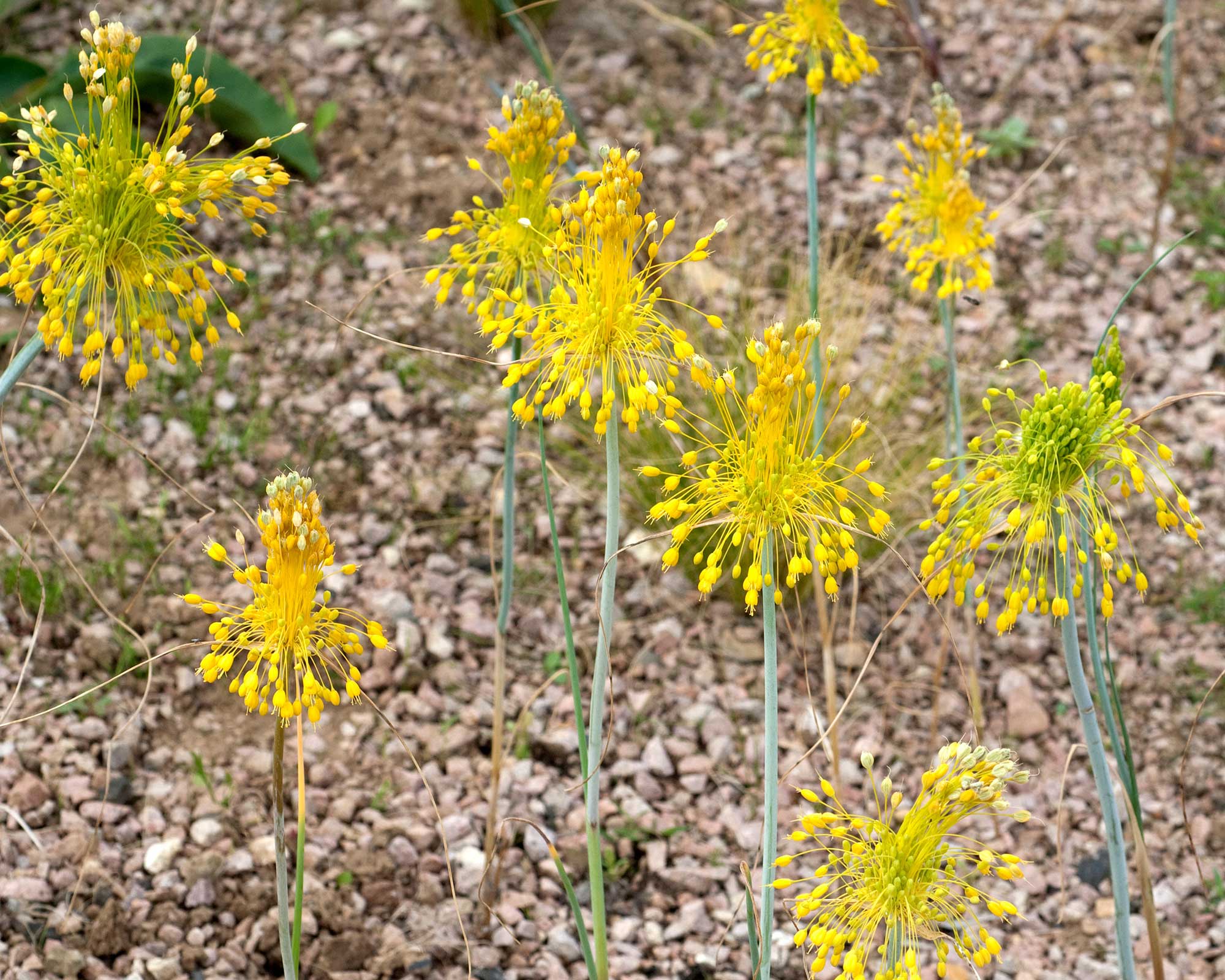
- Best for: Yellow flowers
- Height: 18in (45cm)
- Spread: 4in (10cm)
- Hardiness: USDA 4-8 (UK H5)
From late spring to mid-summer, the yellow-flowered garlic produces glorious loose umbels of glowing-lemon flowers that resemble vibrant paint splashes in the border.
The slender stems are a delightful green-blue shade. Native to stony ground, from the Mediterranean to Iran, it enjoys very well-drained neutral to alkaline soil in sun.
Combine with Crambe maritima, oregano, and poppies.
10. A. caeruleum
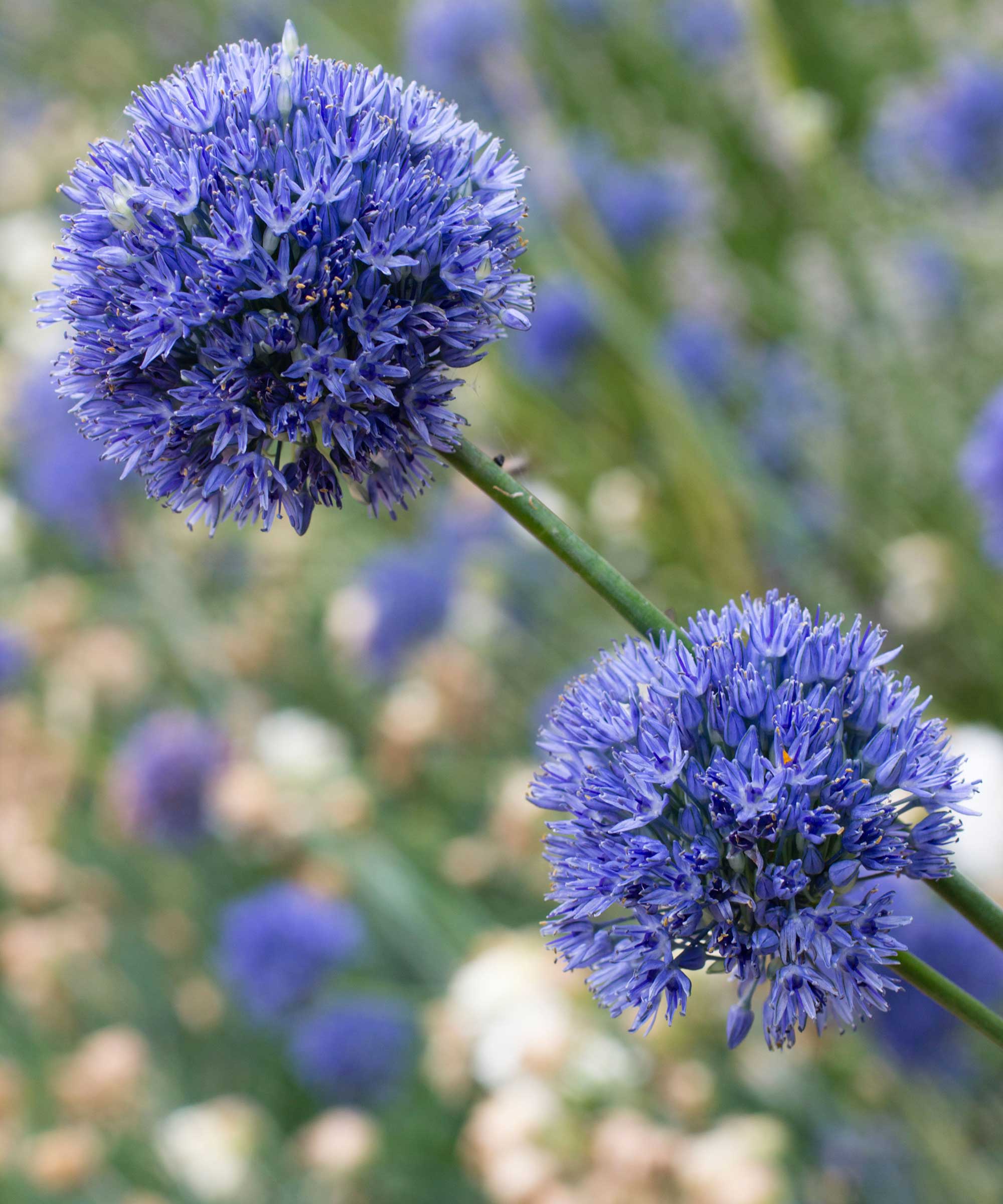
- Best for: Cutting
- Height: 2ft (60cm)
- Spread: 8in (20cm)
- Hardiness: USDA 4-8 (UK H5)
This azure-flowered garlic is a bulbous perennial that glows in the middle of the border in early summer and provides nectar for pollinators.
The starry blue flowers are born in compact globes, providing informal structure. They look lovely alongside geums and salvias and are also great cutting garden flowers for the vase.
Plant the bulbs at least 4in (10cm) deep in fall in well-drained soil in full sun.
11. A. atropurpureum
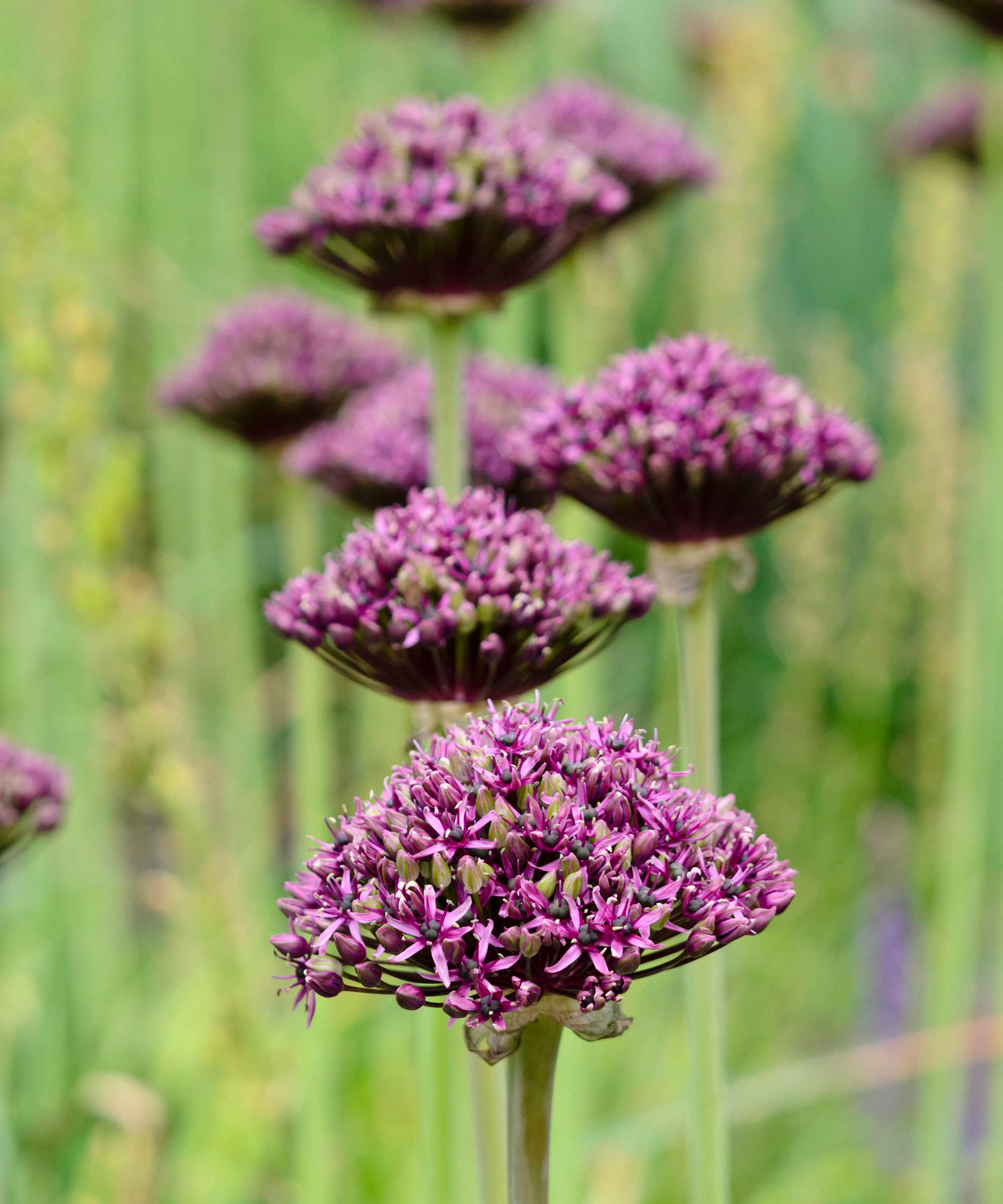
- Best for: Dark flowers
- Height: 2ft (60cm)
- Spread: 6in (15cm)
- Hardiness: USDA 4-8 (UK H5)
Dense heads of starry port-wine-colored flowers make this allium smolder in the border while providing food for bumblebees during late spring and early summer.
It combines well with bronze fennel, roses, or grasses, and injects sophisticated structure into the middle of a flower bed. Plant the bulbs 6in (15cm) deep in fall in well-drained soil in full sun.
12. A. cristophii
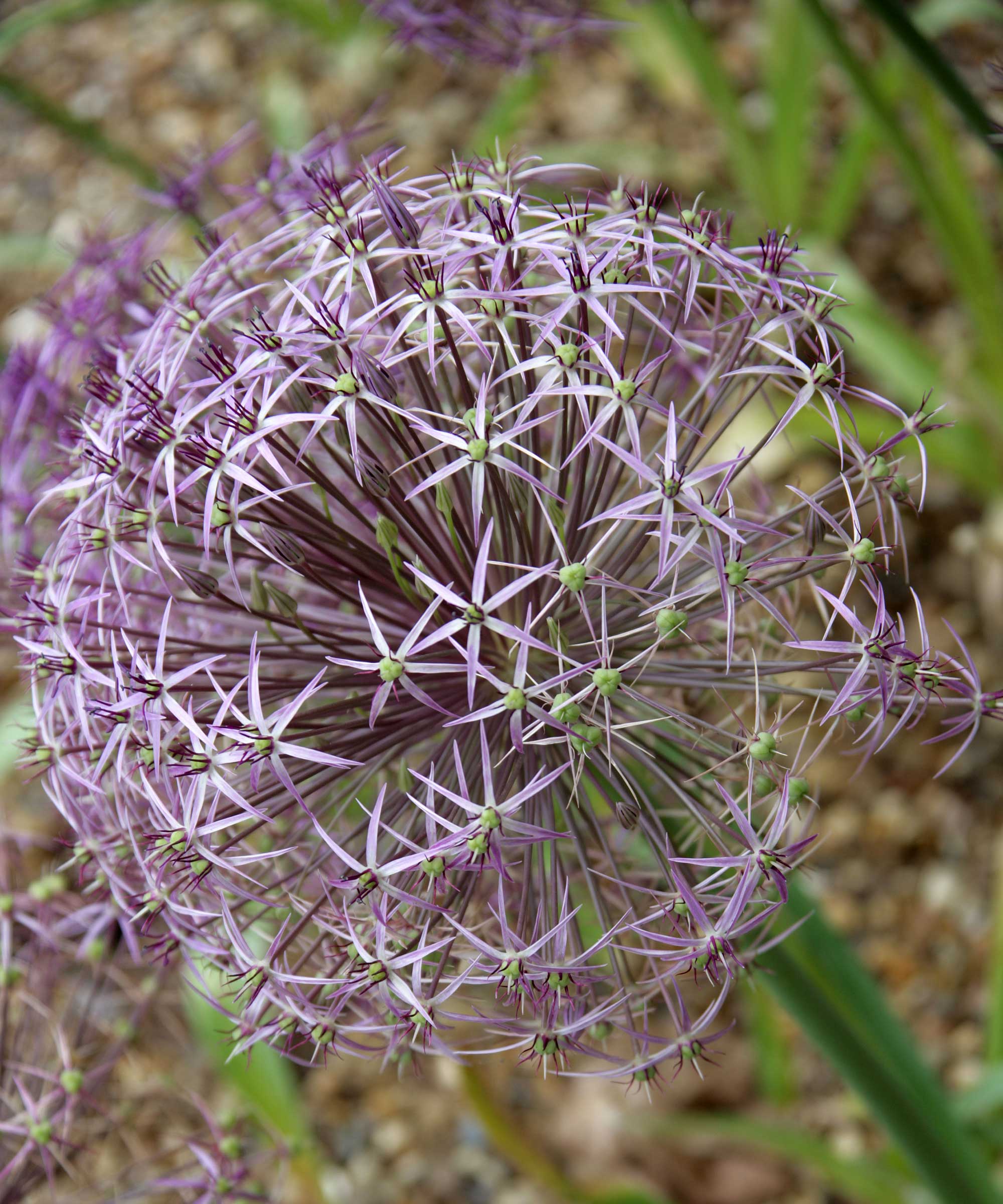
- Best for: Seedheads
- Height: 2ft (60cm)
- Spread: 1ft (30cm)
- Hardiness: USDA 4-8 (UK H5)
If you only buy one allium, make it the star of Persia. Its incredible globes of metallic flowerheads resemble pink-purple sparklers.
Once spent, the fabulous seedheads can be left to adorn the border or brought indoors to dry for the house (by hanging them upside down for a fortnight).
Grow with salvia and euphorbia.
13. A. siculum
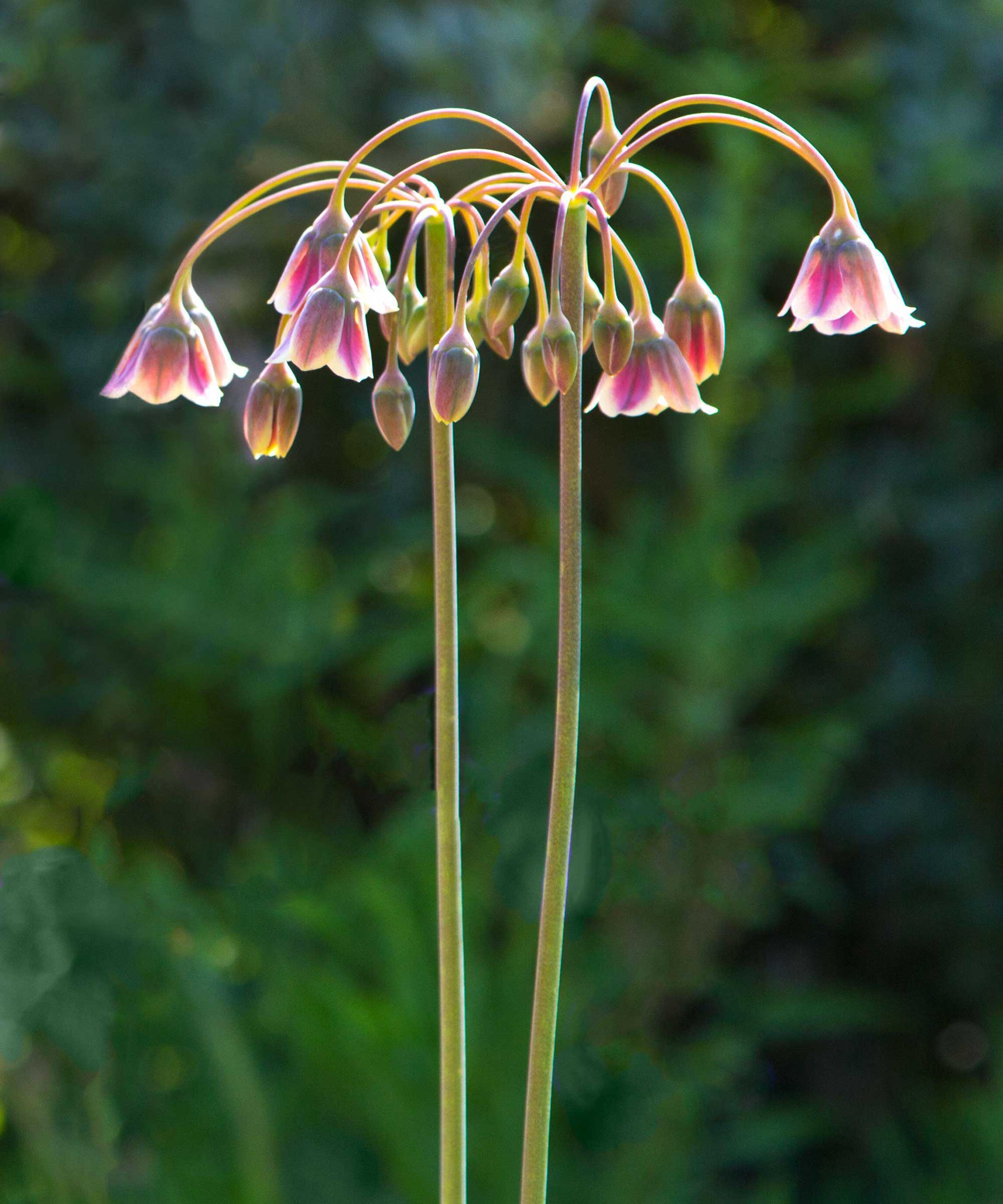
- Best for: Bees
- Height: 4ft (1.2m)
- Spread: 8in (20cm)
- Hardiness: USDA 4-8 (UK H5)
Also called Nectaroscordum siculum or the Sicilian honey garlic, it has beautiful heads of dangling cream, green, and maroon bells that resemble art nouveau lamps.
A great addition to the border in late spring and early summer, it adds height and feeds red-tailed bumblebees. Native to France, Italy, and Turkey, it prefers well-drained soil in sun, but will grow in semi-shade.
14. ‘Globemaster'
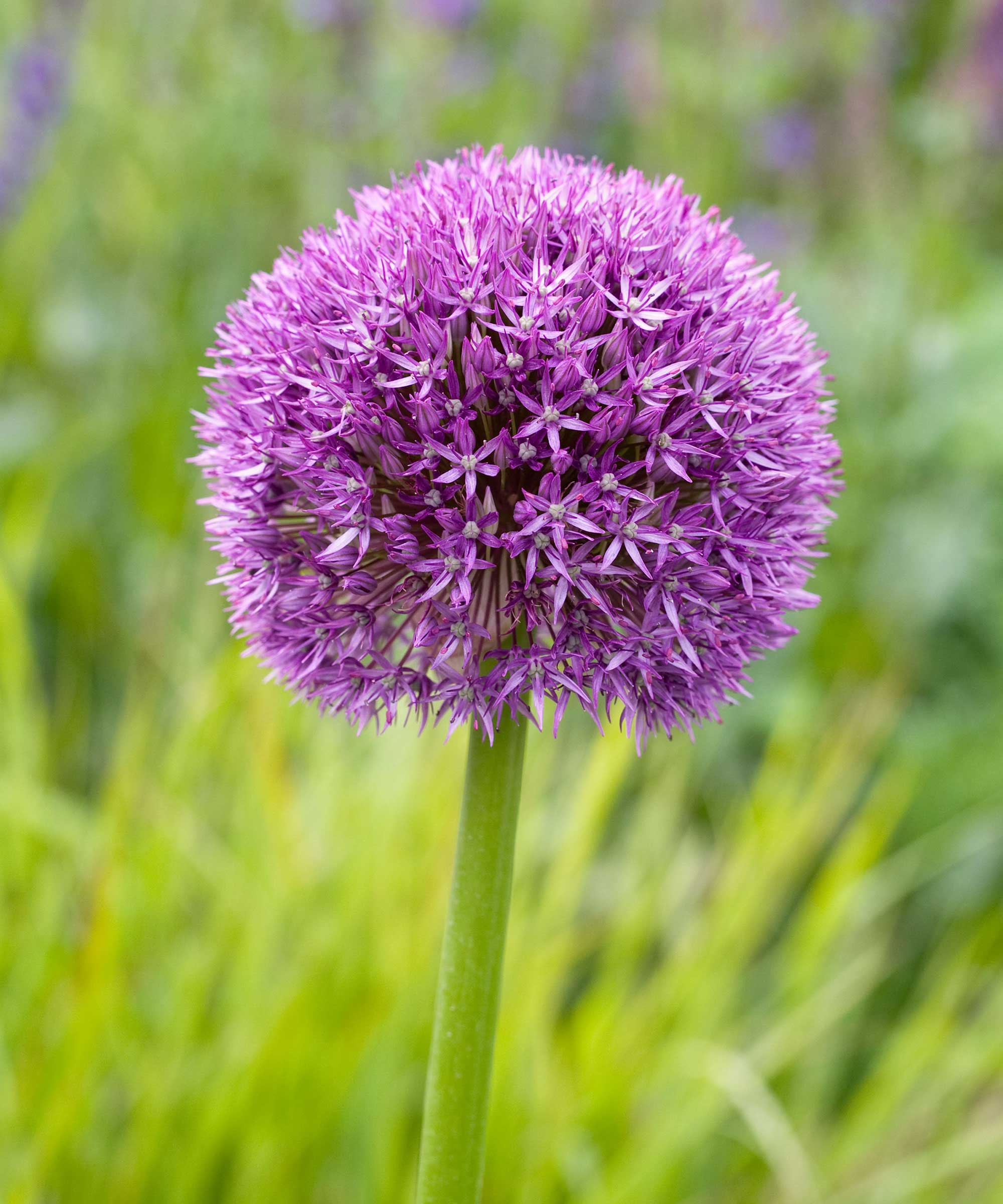
- Best for: Classic border allium
- Height: 3ft (90cm)
- Spread: 18in (45cm)
- Hardiness: USDA 5-8 (UK H6)
‘I love "Globemaster",' says Christine of Broadleigh Gardens. ‘It is not too tall, slightly later-flowering than many, and has large heads packed with hundreds of rich purple flowers, so it lasts a long time in flower. It is also long-lived.’
This is the most well-known and one of the best of the classic globular mauve border alliums. Plant it 6in (15cm) deep in well-drained soil in sun, alongside nepeta, for a pretty display perfect for cottage gardens.
- Buy allium 'Globemaster' in the US: view at Burpee
- Buy allium 'Globemaster' in the UK: view at Thompson & Morgan
15. A. schubertii
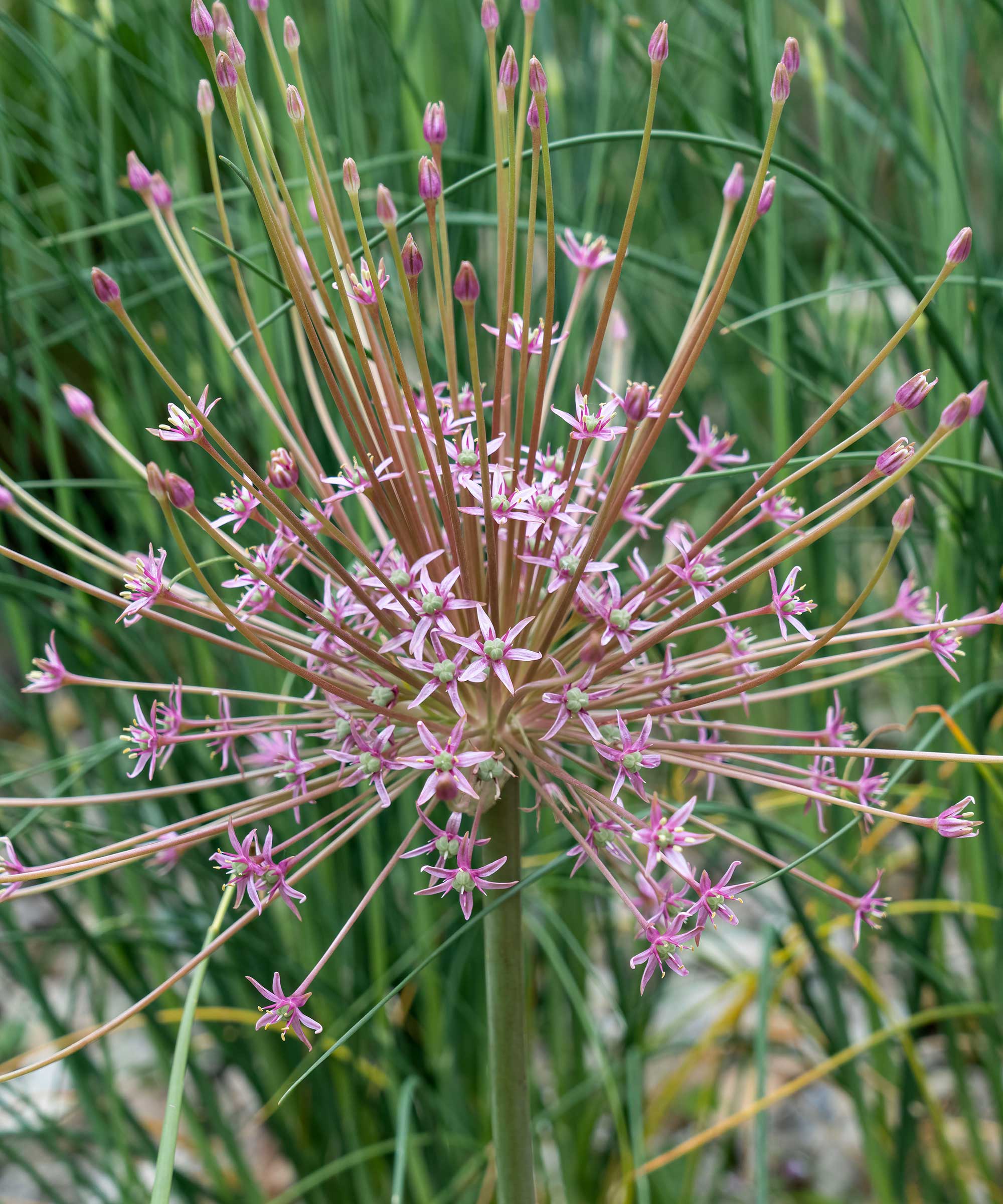
- Best for: Giant flowers
- Height: 2ft (60cm)
- Spread: 18in (45cm)
- Hardiness: USDA 5-8 (UK H4)
A. schubertii produces marvelous flowerheads of purple-pink blooms that can reach 12in (30cm) wide and resemble exploding fireworks in early summer.
They also make incredible seedheads for the house. Plant 6in (15cm) deep in well-drained soil in sheltered sun. It's a great plant to grow with children and looks good with bright-red 'Ladybird' poppies.
How should you arrange alliums in a flower bed?
The classic border alliums (such as ‘Ambassador', ‘Gladiator’, and ’White Giant’) form balls of purple or ivory flowers atop long, sturdy stems. They look fantastic growing through a mass of soft flowers in a flower bed.
For instance, at Great Dixter House and Gardens, the big amethyst globes of ‘Purple Sensation’ hover above the biennial bellflower Campanula patula, and at Mottisfont, another beautiful English garden, Allium cristophii grows through an airy sea of cranesbill. Many alliums also combine well with glaucous or silver-leaved plants, such as sea kale and artemisia.
The taller forms – which don’t block the view of the plants behind – can be grown in the middle of the border as vertical accents.
Shorter alliums (such as ‘Eros’ and the chive A. schoenoprasum ‘Forescate’) are effective when growing through gravel at the border edge.

The garden was always a big part of Holly's life growing up, as was the surrounding New Forest where she lived. Her appreciation for the great outdoors has only grown since then. She's been an allotment keeper, a professional gardener, and a botanical illustrator – plants are her passion.
